In an article entitled “Leeds: City of Contrasts”, for the October 1933 edition of The Architectural Review, John Betjeman wrote: “Leeds does not attract tourists. There is not even a guide-book to the city.” Leeds, after all, was a place with “little use for aesthetics”, where “rain always seems to be falling”.
Seventy years on, Leeds has found a use for aesthetics: for a bout of self-celebration. The city has been itching to have a party for a while. Britain was due to have a European Capital of Culture in 2023 and Leeds had its eye on the prize, but Brexit (which Leeds voted against) scuppered that. Leeds also made the shortlist for hosting the Eurovision Song Contest, only to be pipped by Liverpool.
So the city anointed itself, hence Leeds 2023, “a bold and imaginative Year of Culture packed with creativity. In partnership with world class creatives, homegrown talent, local communities and international arts organisations, together we’re creating a celebration that’s about Leeds, for Leeds, by Leeds.”
So much for a lack of aesthetics, and we’ll be coming to “does not attract tourists” in a minute. What about the constant rain? Perhaps Leeds is implicitly acknowledging that with a street art strand of Leeds 2023 called “A city less grey”.
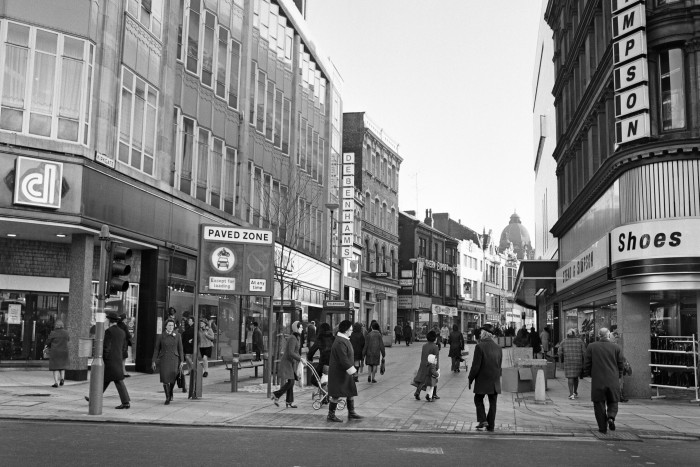
When I visited Leeds from my home city of York in the 1970s, it could have done with being less grey. The “city of a thousand trades”, but principally wool, was losing out to foreign competition. It seemed characteristic that Leeds specialised in “heavy wool”. I was once told that the dark river Aire in Leeds powered water wheels not by being a fast, sprightly thing, but by “sheer weight of water”. And you went to Leeds for “heavy” reasons: to buy a suit for a job interview or (more likely) a funeral; to take out insurance or consult a lawyer.
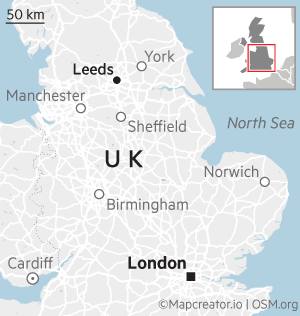
Leeds perpetuated many of the aesthetic solecisms of the time. It had sold the air rights over its railway station. It was full of multistorey car parks and actually boasted of being “the motorway city”. Sumptuous Victorian buildings were knocked down in the centre, especially in Park Row. Kirkgate Market (“the largest indoor market in the world”) survived, but rain always did seem to be sliding over its glass roof, and it resembled a museum of Yorkshireness even in the 1970s, seemingly full of glum, toothless pensioners dunking slices of Battenberg cake in stewed tea or eating Yorkshire pudding and gravy as a main course.
It was always a relief to get back to pretty, pedestrianised, tourist-endorsed York, which, in the most recent reliable (pre-Covid) rankings by Visit Britain of the top-20 most popular cities among foreign visitors for overnight stays, stands at number 14.
But Leeds stands at number 13, whereas in 1999, it was not in the top 20. York does better in the latest figures for domestic visitors, coming in at number seven; but Leeds is at number six. These latter figures do include business trips, and Leeds is a commercial and industrial centre in a way that York is not. Still, things have certainly changed since the days when, as a spokesperson for Visit Leeds told me, “you came here for a look around the shops, then went home for your tea”.
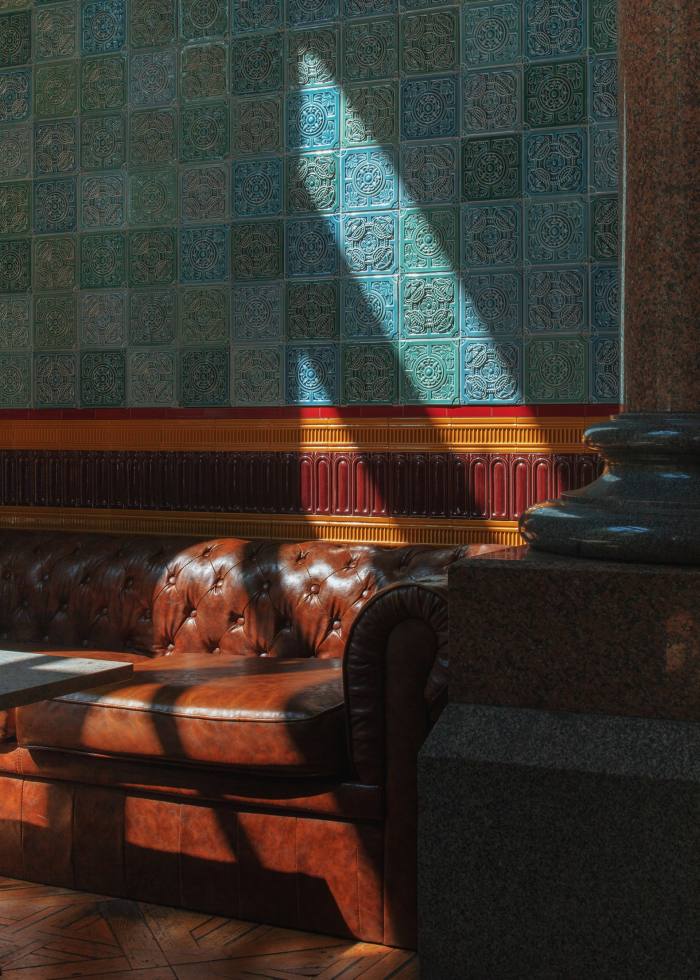
Arriving in Leeds by train, I saw that the station approach was being remodelled, while the adjacent City Square was being pedestrianised, the works accompanied by placards promising: “A city where you don’t need a car to get around.” As I checked in to the Queens Hotel, which had overlooked the square since the 1930s, I learnt that it had been made over during the pandemic closure. The lobby is prettier and cosier than before, its Art Deco austerities softened.
I walked to Kirkgate Market, which still has the echoing, cold air of a Victorian railway station (a good thing, to my mind). You can still buy pikelets, stand pies and every variety of Yorkshire stodge but there are also now stalls labelled Vietnamese Street Food and Istanbul Kitchen.
Over the road are the Victorian arcades, collectively called the Victoria Quarter. In the 1970s, the ceiling tiles depicting cornucopia and other symbols of plenty seemed misaligned with the shops below — eccentric, low-key affairs, seemingly not robust enough to survive in the open air. One arcade housed a doll’s hospital, I remember.
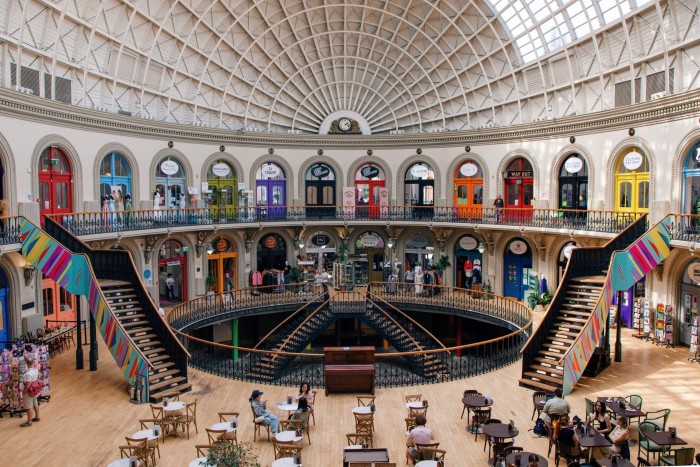

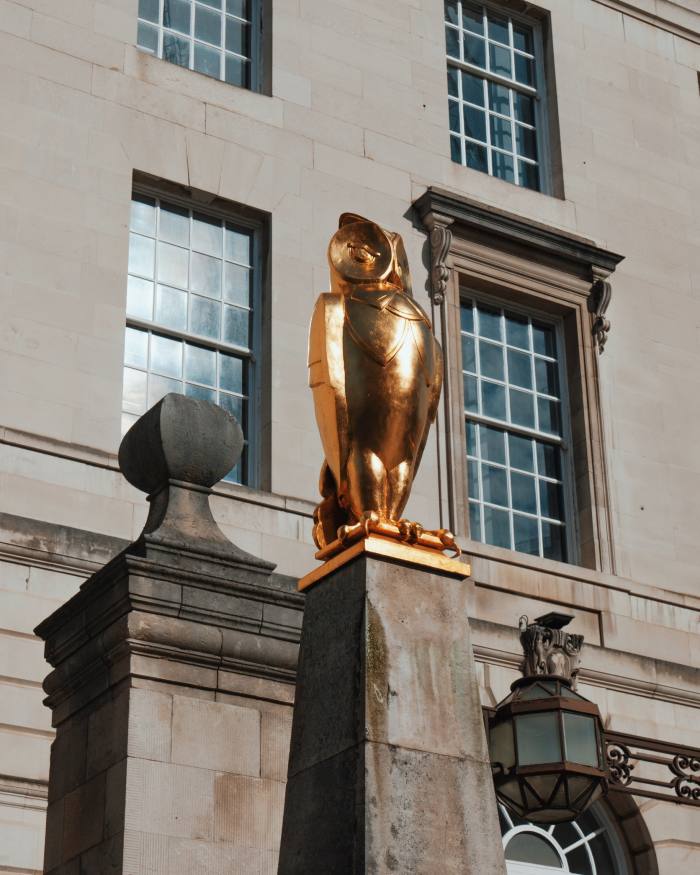
Today, the retail is high-end. It has been growing increasingly so since 1996, when Harvey Nichols opened its first store outside London in the Victoria Quarter, prompting Leeds to be dubbed the “Knightsbridge of the North”. In this northern city at least, services (particularly legal and financial) were mitigating the decline of industry.
I wandered over to the Leeds Art Gallery, where the great allurement for me (I’m ashamed to admit) is the glittery Tiled Hall Café, opened in 1884 as a reading room and reminiscent of a Turkish bath. Much of the gallery itself was given over to paintings by young local artists, part of Leeds 2023, and it was all very vibrant and challenging in a good-humoured way but some of my favourite depictions of 19th and 20th-century Leeds had had to make way, so I took a walk north to what I think of as Leeds’ secret gallery, located in the university.
I was following the signs for “universities” plural because Leeds has five, all booming (hence a student population of 60,000) but my target was the monumental Art Deco of the Parkinson Building, gateway of the main university, whose campus is as big as a small town. The Parkinson is home to the Stanley & Audrey Burton Gallery, established through the benefaction of that couple, Stanley being the son of Montague Burton, founder of the tailoring company that made many of Britain’s demob suits.
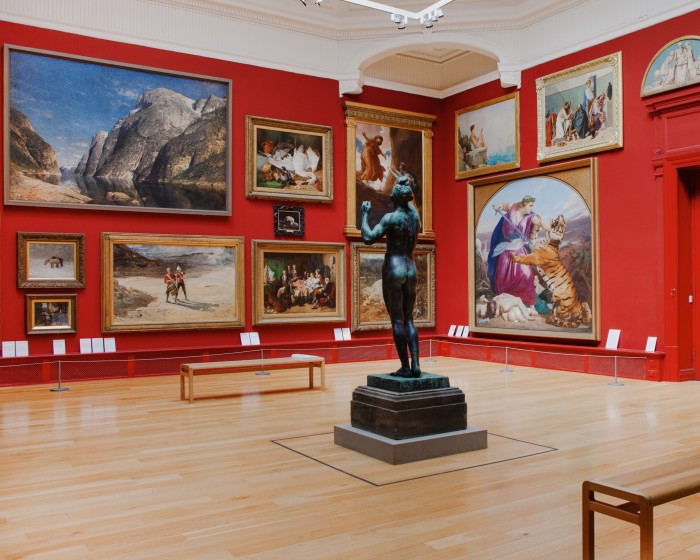

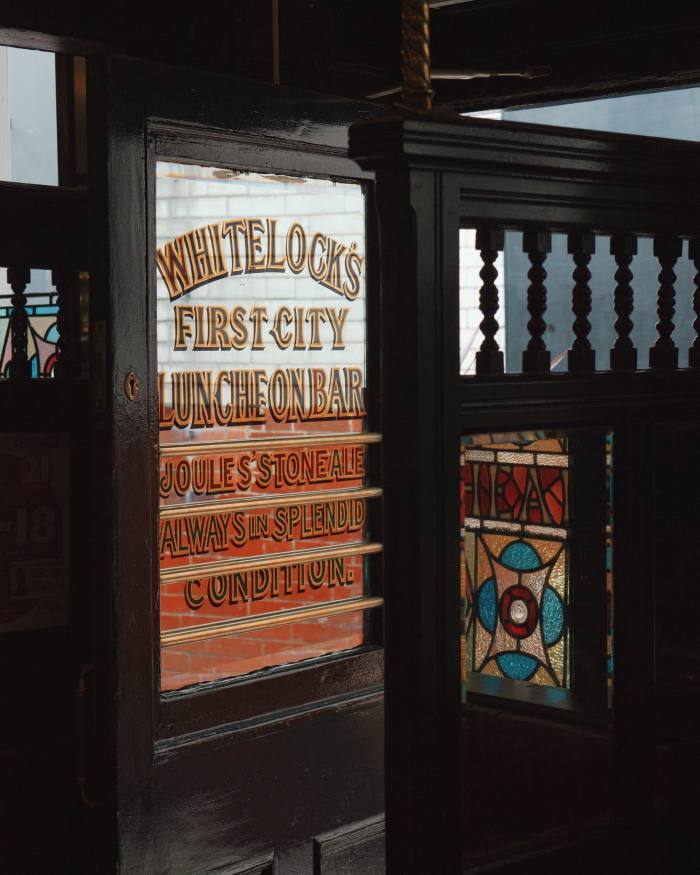
Some of my favourite Yorkshire scenes were on the walls, including a painting by Maurice de Sausmarez, who taught at Leeds College of Art and Design (today Leeds Arts University) in the 1950s. It shows a famous Leeds pub called Whitelock’s: three bar staff in carefully variegated poses, a lemony light filtering through bottles of drink. The “measured, poetic” composition, according to the catalogue, “shows the influence of Cézanne”.
About an hour later, I was in that same, carefully illuminated pub, made welcoming by gorgeous ceramics and stained glass. I was surrounded by students having what I think they call “pre-drinks”: that is, early evening drinks taken before having some more drinks later. Leeds — which is very keen on neon — suits evenings, or vice versa, and some of the city pubs try to pre-empt it by advertising “happy hour: 2pm-4pm”.
It had been occurring to me, as I walked through Leeds — passing the fairground behind the colossal Town Hall, and the other one in front of it — that while the city has been greatly reinvigorated, it has not necessarily been gentrified. I had dropped into the Leeds City Museum on Cookridge Street, where the main gallery reverberated to the sound of “The Jean Genie” by David Bowie, this in commemoration of a gig Bowie played 50 years ago at the Leeds Rolarena (a roller disco). All around town, the signs advertising Leeds 2023 proclaim: “This town is fizzing and you’re the bubbles.”
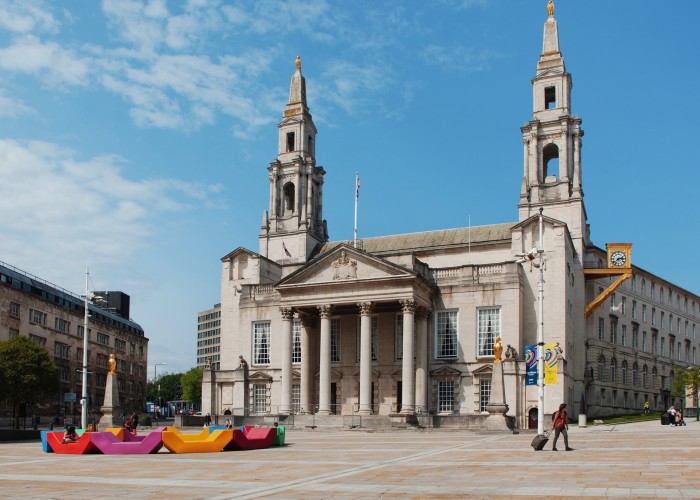
Quitting Whitelock’s, I wandered south towards the river, which I never would have done in the 1970s. Back then, it was a zone of derelict warehouses on which the rest of the city seemed to have turned its back. Today, there is a south exit from the railway station, leading to the centrepiece of the regenerated riverside, Granary Wharf. Here three towers have sprouted in a mellower version of standard Leeds red brick: one houses the DoubleTree by Hilton hotel, the other two apartment blocks, and there are bars and shops to cater to them.
Here, the Leeds and Liverpool Canal meets the Aire, and these formerly sullen waterways now sparkle like a water feature. Further east on the north bank stand The Calls, the old docks. All the early Victorian brickwork seems to have been given a good scrub but not at the expense of Dickensian atmosphere.
Resisting the temptation of the many bars, I walked to Shears Yard, an industrial-chic restaurant (all exposed brick and naked bulbs) in a former rope factory. I ate an excellent meal involving something that would have been available in 1970s Leeds, grilled sea bass, accompanied by some things that wouldn’t have been: kimchi-roasted new potatoes, yuzu hollandaise and soy-glazed tomatoes.
My waiter tipped me off about a good place for a late drink, the Domino Club. When I said I’d never heard of it, he said, “Ah! That’s the whole point.” The somewhat coy pretence is that the Domino Club is a speakeasy, and there are several of these in Leeds, reflecting its American-big-city swagger, with its high-rises, its love of cocktails and the fondness, among its wealthier and older men, for long double-breasted woollen coats.

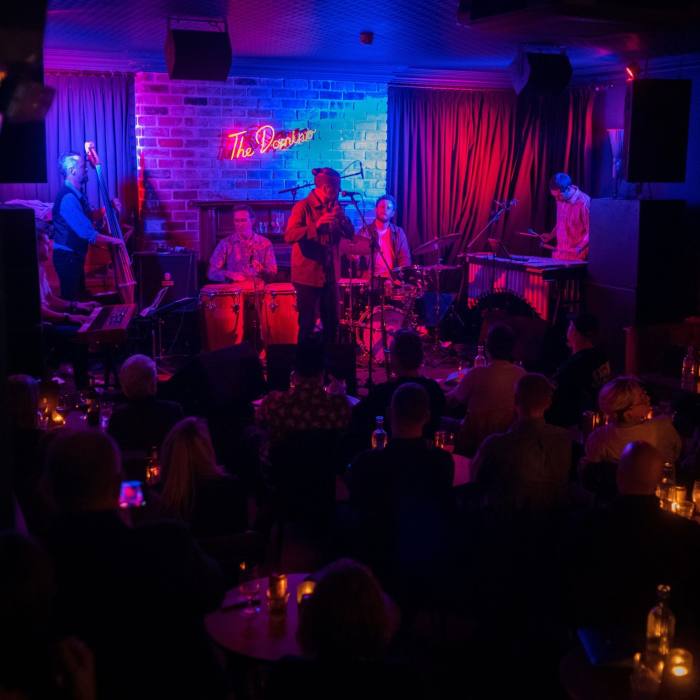

The Domino Club is accessed via a barber’s shop (Lords Barbering) in the Grand Arcade. It’s a big, blue basement, decorated to suggest 1930s Chicago. I had a glass of white wine for a fiver and spent an enjoyable hour listening to the band playing bebop jazz.
The next morning, I crossed the river again, to The Tetley, a contemporary art gallery housed in a building that was once the grand headquarters of Tetley’s Brewery. The spooky installations (most with soundtracks) seemed to be making mysterious statements about the wood-panelled former offices they inhabit.
Later, I walked a couple of miles west along the canal (meeting no more than three or four dog walkers on the way, all of whom, this being Yorkshire, said hello). My destination was the Leeds Industrial Museum, in what was once Armley Mills, the largest woollen mill in the world. The museum is really a chamber of horrors. It’s great weaving and spinning machines, smelling strongly of grease, might have been abandoned only hours before; around the white stone walls are bulletins about the diseases the spinners and weavers were heir to, and descriptions of how crying children were forced to start work at 5am.
It’s as though the museum is warning us not to indulge in that romanticisation of the past so familiar in northern towns. It’s easier to resist in Leeds than most. In Leeds, it seems to me, the best times are the present ones.
Andrew Martin’s latest book is ‘Yorkshire: There and Back’ (Corsair, £20)
Details
For listings of events being staged as part of Leeds 2023, see leeds2023.co.uk. Andrew Martin was a guest of Visit Leeds (visitleeds.co.uk) and the Queens Hotel (thequeensleeds.co.uk; doubles from about £120). The restaurant Shears Yard is at 11-15 Wharf Street (shearsyard.com)
Find out about our latest stories first — follow @ftweekend on Twitter



